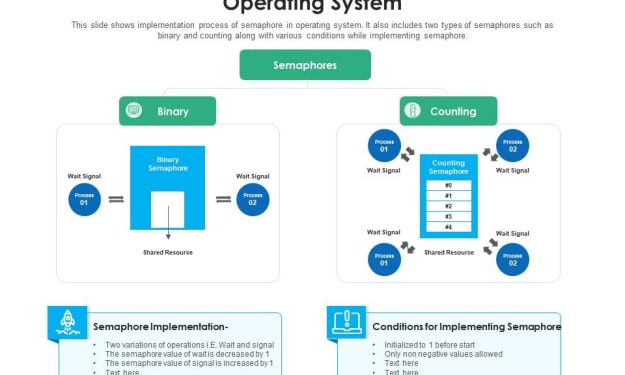Blockchain and the Future of Cross-Border Payments
This article could explore how blockchain technology is disrupting traditional cross-border payment systems, offering faster, cheaper, and more secure transactions.
Cross-border payments have traditionally been slow, expensive, and subject to a high degree of risk. However, blockchain technology has the potential to revolutionize the way cross-border payments are made, enabling faster, cheaper, and more secure transactions. In this article, we will explore how blockchain is transforming cross-border payments and what the future of this technology may hold.
The Challenges of Cross-Border Payments:
Cross-border payments are notoriously slow and expensive. They often involve multiple intermediaries and can take days or even weeks to complete. In addition, there are significant risks associated with cross-border payments, including fraud, compliance, and regulatory risks.
How Blockchain is Changing Cross-Border Payments:
Blockchain technology has the potential to address many of the challenges associated with cross-border payments. Here are some of the ways blockchain is transforming cross-border payments:
Faster Transactions:
By using blockchain technology, cross-border payments can be completed in a matter of seconds or minutes. This is because blockchain transactions are processed automatically, without the need for intermediaries such as banks or payment processors.
Lower Costs:
Blockchain transactions are also much cheaper than traditional cross-border payments. This is because there are no intermediaries involved, which means there are no fees to be paid to banks or payment processors.
Increased Security:
Blockchain technology is also more secure than traditional cross-border payments. Transactions are recorded on an immutable ledger, which means they cannot be altered or deleted. In addition, blockchain transactions are encrypted and secured using complex cryptographic algorithms.
Challenges to Adoption:
While the potential benefits of blockchain in cross-border payments are significant, there are still challenges that need to be addressed before widespread adoption can occur. These challenges include:
Scalability: Blockchain networks currently have limited scalability, which means they may not be able to handle the volume of transactions required for cross-border payments.
Interoperability: Blockchain networks also need to be interoperable to enable cross-border payments. This requires the development of common standards and protocols across different blockchain networks.
Regulatory Challenges: There are also regulatory challenges associated with the use of blockchain in cross-border payments. Regulators are still grappling with how to regulate blockchain transactions and ensure compliance with anti-money laundering and other regulations.
Certainly, here are some additional insights on the topic of "Blockchain and the Future of Cross-Border Payments":
Increased Transparency:
Blockchain technology can also enable increased transparency in cross-border payments. Each transaction is recorded on a distributed ledger, which can be accessed and viewed by all parties involved in the transaction. This means that all parties can see exactly where their funds are at any given time, increasing trust and reducing the risk of fraud.
Decentralization:
Blockchain technology is decentralized, meaning that there is no single point of failure. This makes cross-border payments more resilient to cyber attacks and other forms of disruption.
Smart Contracts:
Smart contracts are self-executing contracts that can be programmed to automatically execute certain actions when certain conditions are met. By using smart contracts, cross-border payments can be automated and made more efficient.
Increased Financial Inclusion:
Blockchain technology can also increase financial inclusion by enabling cross-border payments to be made to people who do not have access to traditional banking services. This can help reduce the cost of remittances and enable people to participate more fully in the global economy.
Tokenization:
Blockchain technology can enable the tokenization of assets, including fiat currencies, which can be used to facilitate cross-border payments. This means that cross-border payments can be made using digital tokens, which can be easily exchanged and settled on blockchain networks.
Central Bank Digital Currencies (CBDCs):
Many central banks are exploring the use of CBDCs, which are digital versions of fiat currencies that are backed by central banks. CBDCs could potentially be used to facilitate cross-border payments, enabling faster and cheaper transactions without the need for intermediaries.
Collaboration:
Blockchain technology is also facilitating collaboration between different players in the cross-border payments ecosystem. Banks, payment processors, and other players are collaborating to develop common standards and protocols for blockchain-based cross-border payments.
Standards:
Standards are critical to the widespread adoption of blockchain in cross-border payments. The development of common standards and protocols will enable different blockchain networks to interoperate, creating a more seamless and efficient cross-border payments ecosystem.
Regulatory Challenges:
One of the main challenges facing the adoption of blockchain in cross-border payments is regulatory uncertainty. Many countries have different regulations governing the use of blockchain and cryptocurrencies, which can create complexity and hinder adoption. Governments and regulatory bodies will need to work together to create clear and consistent regulations to enable the widespread adoption of blockchain in cross-border payments.
Privacy Concerns:
While blockchain technology enables increased transparency, some parties may have concerns about the privacy of their transactions. For example, companies may not want to share certain information about their supply chains or financial transactions with their competitors. Blockchain developers will need to ensure that privacy concerns are addressed to enable the widespread adoption of blockchain in cross-border payments.
Education:
Another challenge facing the adoption of blockchain in cross-border payments is the need for education. Many businesses and individuals may not fully understand the technology or how it can be used in cross-border payments. Education and awareness campaigns will be critical to increasing adoption and trust in blockchain technology.
Integration with Legacy Systems:
Finally, blockchain technology will need to be integrated with existing legacy systems in order to be adopted at scale. Many businesses and financial institutions have invested significant resources in their existing systems, and may be reluctant to switch to new technologies. Blockchain developers will need to ensure that their technology can seamlessly integrate with existing systems to enable widespread adoption.
In conclusion, blockchain technology has the potential to transform cross-border payments by enabling faster, cheaper, more secure, and more transparent transactions. While there are still challenges that need to be addressed before widespread adoption can occur, the potential benefits of blockchain in cross-border payments are significant. As the technology continues to evolve and mature, we can expect to see increased adoption of blockchain in cross-border payments, ultimately leading to a more efficient and secure global payments system.
About the Creator
Abdou AG
Abdou AG is a writer and researcher who specializes in writing articles about artificial intelligence (AI). With a strong passion for technology and its potential to change the world, he has spent several years studying and writing about AI
Enjoyed the story? Support the Creator.
Subscribe for free to receive all their stories in your feed. You could also pledge your support or give them a one-off tip, letting them know you appreciate their work.







Comments
There are no comments for this story
Be the first to respond and start the conversation.